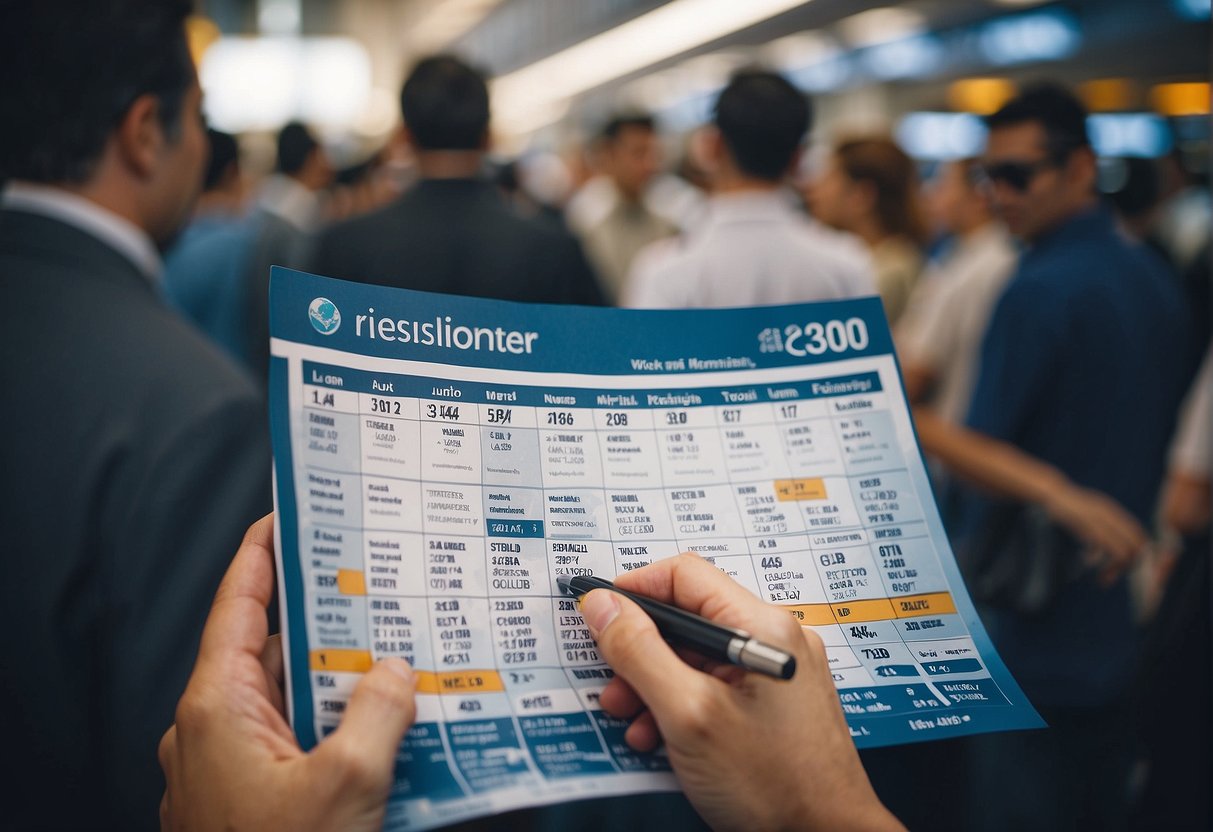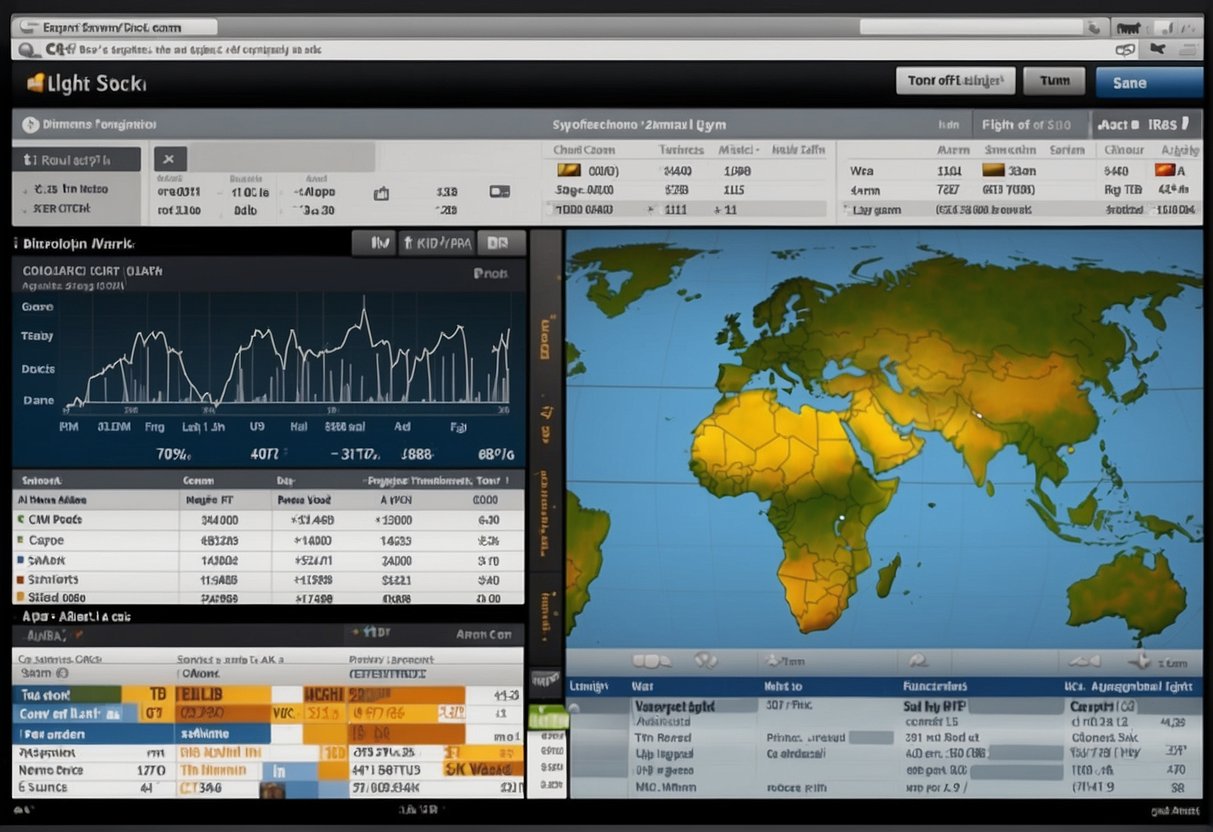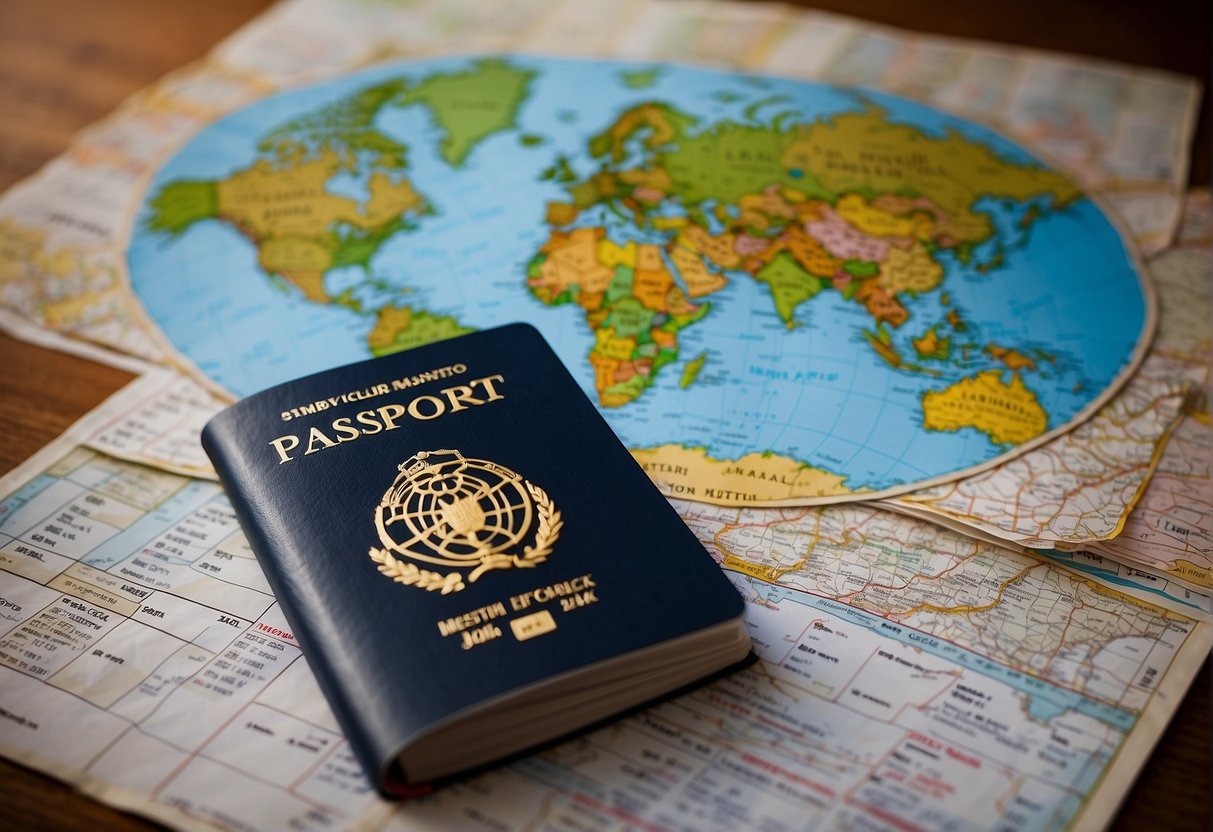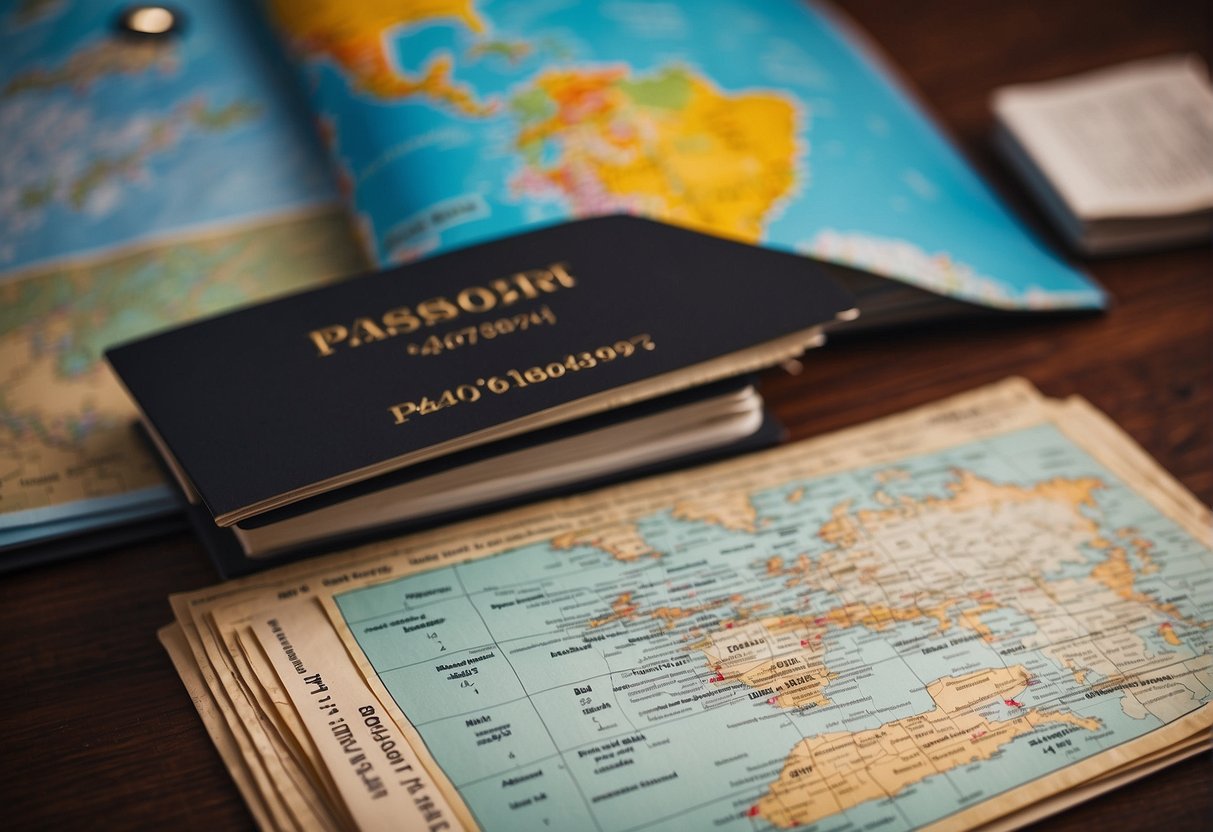Traveling internationally can offer an enriching experience, but it also comes with a hefty price tag, particularly when it comes to airfare. However, savvy travelers know that understanding the intricacies of airline pricing can result in significant savings. Generally, airfares fluctuate based on a variety of factors including demand, season, and even the day of the week. For instance, flying on certain days can be surprisingly cheaper than others, which is crucial for those looking to stretch their travel budgets.

Tuesdays and Wednesdays emerge as front-runners in the race for the cheapest days to fly internationally. The demand for flights traditionally dips mid-week when fewer people are traveling, allowing airlines to offer lower prices to fill seats. Additionally, planning your flights during particular seasons or times of the year can also yield more affordable rates. Taking advantage of these patterns requires travelers to be flexible and attentive to the timing of their bookings.
Key Takeaways
- Mid-week flights, especially on Tuesdays and Wednesdays, are typically less expensive.
- Understanding seasonal trends and demand can lead to more affordable international travel.
- Flexibility and strategic planning are essential for securing the best flight deals.
Understanding Airfare Trends

In the quest for cheap flights, one must appreciate the delicate interplay of supply and demand as well as the insights provided by historical data. These factors are pivotal in determining airfare prices.
Impact of Supply and Demand
The availability of seats (supply) and the number of travelers seeking those seats (demand) significantly influence flight prices. When the demand for air travel to a destination increases, but the number of available seats remains constant, airfares tend to rise. Conversely, if airlines add more flights to a route, thereby increasing the supply without a corresponding rise in demand, prices may drop. In 2022, supply and demand dynamics were especially pronounced, leading to fluctuating airfare prices throughout the year.
Historical Data Analysis
Airlines often base their pricing strategy on historical data analysis. This encompasses reviewing flight prices and booking patterns from previous years. Typically, February and March are observed as the cheapest months for travel, while August and December are noted for higher fares. Historical trends suggest that booking on certain days, like Tuesdays, Wednesdays, and Saturdays, can result in more favorable airfare prices domestically. These patterns can guide consumers on when to book to secure the most economical international travel options.
Optimal Timing for Booking Flights
When planning an international trip, finding the most economical flight options hinges on understanding the ideal timing for bookings. Insightful analysis of booking trends can help travelers secure the best deals.
Best Time to Book Flights
For international travel, the consensus points to booking tickets within a three to ten months window before the departure date. Prices are often more affordable during this period compared to last-minute bookings or booking too far in advance. The timing may vary based on destination, but securing flights ahead of time increases the likelihood of finding lower fares. For instance, flights to popular destinations can be less expensive during February and March, while August and December are typically the costliest months to travel.
Booking Trends and Windows
Travelers will not often find the best prices by reserving seats ten months in advance. However, beginning the search early provides a baseline for understanding normal ticket costs. Closer to travel, fares may fluctuate. For domestic flights within the U.S., a narrower booking window, typically one to two months in advance, may yield the best deals. Keeping an eye on these trends and understanding booking further in advance for international flights is crucial, especially since the approach to scoring cheap flights has evolved over time.
Weekly Patterns for Cheaper Airfare
Understanding the weekly patterns in airfare pricing can lead to significant savings. Certain days of the week offer lower prices, influenced by the demand for flights.
Cheapest Days to Fly
Historically, midweek flights tend to be more affordable. Tuesday and Wednesday are consistently identified as the cheapest days to fly internationally. Airlines often release new fares and discounts early in the week, which can result in lower prices.
- Tuesday: Usually sees few travelers starting their journeys; hence, prices are lowered to attract passengers.
- Wednesday: Similarly underbooked, meaning airlines are more likely to offer deals.
Most Expensive Travel Days
Conversely, the weekend, particularly Sunday and Monday, sees a spike in airfare. Sunday remains one of the more expensive days to travel, with many choosing to extend their weekend or begin their workweek travel.
- Sunday: Competitive pricing due to high demand from weekend travelers returning home.
- Monday: Business travel ramps up, causing fares to increase.
Thursday tends to be a pivot point in the week, where fares can begin to climb as travelers start their weekends early or take longer trips. It is advisable to plan flying internationally while avoiding these peak travel days to make the most of potential savings.
Seasonal Influences on Flight Prices

Flight prices fluctuate significantly throughout the year, largely impacted by seasonal demand. The cost of international flights can be heavily influenced by peak travel times, including major holidays and school vacation periods.
High Season vs. Low Season
The High Season typically correlates with times of the year when travel is most popular. During months like July and December, travelers can expect to pay premium prices. Holidays like Christmas and Thanksgiving draw a high demand for international flights, causing prices to soar. Conversely, the Low Season sees fewer travelers, such as the period between early January and late March. During these months, airlines are known to offer more competitive rates to stimulate demand.
Shoulder Season Advantages
Shoulder Season refers to the time between peak and off-peak periods. Airlines adjust their prices based on the anticipated lower demand compared to the High Season. For instance, travelers can often find lower prices and good weather in the autumn months. The Shoulder Season can provide a sweet spot for savvy travelers looking to avoid the crowds and high prices of peak times while still enjoying moderate weather. For international flights, this period typically falls in the weeks following major holidays or just before the peak summer months.
Global Region-Specific Advice

When planning international travel, considering the region you intend to visit is crucial as each has specific days where flights may be cheaper. Ticket prices can vary significantly based on local holidays, seasons, and airline competition within the region.
Europe
For travelers aiming to visit Europe, midweek flights—particularly Tuesdays and Wednesdays—are often the most cost-effective options. In some cases, booking during the shoulder season, which is April through mid-June and September through October, can also yield savings. If flying to popular destinations like France or Italy, it’s wise to avoid peak tourist months like July and August when fares are typically highest.
Asia
Touring Asia can be more affordable if flights are booked for midweek days. Japan in particular tends to have higher fares during the beginning and end of the year due to various national holidays and festivals. Strategic planning around these times can lead to considerable savings. Consider looking into affordable international trips that include destinations like Thailand or India, where flexible travel dates can lead to better deals.
Americas
In the Americas, the specifics vary by region:
-
Canada and the United States: Travelers can generally find cheaper flights on Tuesdays and Wednesdays. Major U.S. holidays, like Thanksgiving and Christmas, see a spike in airfare prices, so booking outside these times is recommended.
-
Mexico and the Caribbean: Midweek flights are again typically the most affordable, with late spring and fall being the best times to find deals before and after the busy tourist season.
-
South America: Depending on the country, avoiding local festival periods, such as Carnival in Brazil, can lead to cheaper flight options. Traveling during the off-peak seasons, which differ from country to country, also helps in securing lower fares. Exploring various best international airlines for your South American journey may provide more economical options.
Utilizing Flight Search Tools and Alerts

Maximizing savings on international flights often hinges on the effective use of flight search tools and the setting up of price alerts. This proactive approach can lead to significant discounts.
Price Alert Services
Price alert services such as Google Flights and Skyscanner offer the ability to monitor fares for specific routes. When a user sets up an alert, they will receive notifications when the price drops to or below their specified threshold. For instance, using Google Flights, travelers can track the price trends for a chosen flight and get updates directly via email.
Comparison Websites
Comparison websites play a crucial role in finding affordable international airfare. By searching across multiple airlines and booking sites, platforms like Skyscanner make it easier to compare prices at a glance. Subscribing to services like Thrifty Traveler Premium can further enhance the search by providing access to hand-picked flight deals that might otherwise be missed.
Leveraging Points and Travel Cards

When planning international travel, savvy flyers significantly cut costs by strategically using points and travel cards, which can be just as important as finding the cheapest days to fly.
Airline Credit Cards
Airline credit cards are tailored for frequent flyers and offer perks like free checked bags, priority boarding, and bonus miles on purchases. Sign-up bonuses can be a major boon, where new cardholders might earn tens of thousands of miles after meeting an initial spending requirement. To benefit fully, these bonuses should be aligned with your travel goals and spending habits.
- Tip: Look for cards co-branded with airlines that offer significant rewards for spending on flights.
Maximizing Rewards
Maximizing rewards demands a meticulous strategy where every purchase earns points. Travel credit cards offer diverse rewards that can be used for more than just flights, including hotels and car rentals.
- Pay attention to special promotions and spending categories; using your card for everyday purchases in these areas can mean more miles.
- Understand the points transfer policies; some cards allow transferring points to different airlines, which can be more valuable than redeeming through the card’s travel portal.
By leveraging these methods and keeping track of the spending and reward cycles, travelers can exponentially increase their points and miles.
Strategic Flight Selection

Selecting the right flight can make a significant difference in cost, especially for international travel. One must consider the class of service and the type of flight when seeking the best value.
Choosing Flight Classes
When booking international flights, passengers have the option of business class, first class, or economy class tickets. Business class offers a comfortable experience with added amenities at a price point typically lower than first class. These tickets often come with lounge access and increased flyer points. Conversely, first class provides the highest level of luxury and space but at a premium cost. For those looking to save, economy class is the most budget-friendly tier, with basic services and variable legroom.
- Business Class: Extra comfort, better service, moderate price increase.
- First Class: Ultimate comfort, highest price.
- Economy Class: Most affordable, basic amenities.
Nonstop vs. Connecting Flights
Travelers must decide between nonstop flights and connecting flights. Nonstop flights offer the convenience of traveling directly to the destination with no layovers. This convenience often comes with a higher price tag, especially for business or first-class tickets. However, they can save time and reduce the hassle of changing planes.
- Nonstop Flights: Greater convenience, potentially higher cost, time-efficient.
Connecting flights, though potentially longer, might provide substantial savings. They could be a strategic choice for economy travelers who are not time-constrained and those willing to trade time for a reduced fare.
- Connecting Flights: Possible lower cost, increased travel time.
Selecting strategic flight options requires balancing cost with convenience and comfort. A judicious choice depends on the traveler’s preferences, budget, and schedule.
Frequent Flyer Strategies

When aiming to save on international travel, travelers can greatly benefit from strategic use of airline miles and adhering to the Flight First Rule to leverage flight pricing dynamics.
Booking with Airline Miles
Travelers can often find significant value in booking international flights with airline miles, especially when targeting ‘sweet spots’ in award charts. For example, utilizing Delta SkyMiles on partner airlines for flights may require fewer miles than expected. It’s crucial to check the specific airline’s award chart and look for low-demand times to travel.
Flight First Rule
The Flight First Rule suggests choosing your flight before anything else to prioritize getting the best airfare deal. This is particularly effective when looking for international flights where the date flexibility can translate into significant savings. By focusing on the flight options first, travelers can plan their itinerary based on the most cost-effective options available.
International Travel Considerations

When planning an international trip, travelers should consider the influence of cultural events on their travel plans and the importance of proper preparation before departure.
Cultural and Seasonal Events
London and Paris are prime examples of cities where local festivities can significantly impact travel costs and availability. High-profile events such as Paris Fashion Week or the Wimbledon tennis tournament in London tend to increase demand for flights and accommodation. It’s advisable to book flights and hotels well in advance when traveling to these cities during such peak seasons.
Conversely, visiting Barcelona during the off-peak season can mean fewer crowds at attractions like La Sagrada Familia. Similarly, traveling to Tokyo outside of the busy Cherry Blossom season can lead to more affordable travel options. For those visiting Reykjavik, aligning with the Northern Lights season can be a magical experience, but it’s essential to plan accordingly.
Preparing for an International Trip
Travel Insurance: It’s critical to obtain travel insurance that covers international trips. This ensures travelers are covered for unexpected medical expenses, trip cancellations, or lost baggage.
Documentation: Before jetting off, travelers must ensure they meet all requirements for international travel, including valid passports, visas, and any additional entry requirements.
TSA and Security: Understanding TSA guidelines is essential to ensure a smooth passage through airport security. These regulations might include restrictions on carry-ons or advice on how to pack electronics.
Careers Involving International Travel: For those whose jobs involve frequent flying, such as positions listed in international travel careers, staying updated on immigration regulations and maintaining organized travel documents is particularly important.
When embarking on international travel, preparation extends beyond mere packing. Travelers should be diligent about the cultural and seasonal context of their destinations and ensure all logistical and administrative aspects are addressed comprehensively.
Airfare Mistake Fares and Deals

In the quest for cheap international travel, snagging a mistake fare can yield significant savings. They’re rare but offer the opportunity to book flights at a fraction of the normal cost.
Identifying Mistake Fares
Mistake fares occur due to human error, technical glitches, or currency conversion mistakes. These can result in astonishingly low prices, like a business class ticket for the price of economy. To identify a mistake fare, compare prices across different airlines and booking platforms—if one is much lower than others, it may be a mistake fare. These fares don’t last long, so it’s essential to act quickly if you spot one. Be aware that airlines might not honor them, but in many cases, they do.
Benefits of Thrifty Traveler Premium
Thrifty Traveler Premium is a subscription service that notifies subscribers about bargain flight deals, including mistake fares. Subscribing can be beneficial because it eliminates the need for constant fare checking, with deal alerts sent directly to your inbox. This service helps travelers lock in deals that could save hundreds or even thousands on international flights.
Frequently Asked Questions
When planning international travel, budget-conscious travelers often ask specific questions to help them save on airfare.
What day of the week are international flights typically least expensive?
Flight prices fluctuate, but international flights are typically least expensive on weekdays, with Tuesdays, Wednesdays, and Saturdays being the standard least costly days to fly internationally.
How far in advance should I book my international flight for the best rates?
To secure the best rates, international flights should generally be booked one to seven months in advance of your travel date.
During what time of day can I usually find lower prices on flights?
Lowest prices on flights can be found during off-peak hours, typically when demand is lower such as late at night or early in the morning.
What is the most cost-effective month to book an international flight?
The cheapest months to travel are typically October and November, with May and June usually being the most expensive months for international travel.
Are there specific days I should avoid when booking flights to get better deals?
Avoid booking flights on Fridays and Sundays as these tend to be the most expensive days due to high demand and weekend travel.
Is there a particular time during the week when flight prices tend to drop?
Flight prices can drop during the middle of the week, with Tuesday afternoon sometimes being cited as a time when airlines may release additional deals. However, this is not a guaranteed pattern, and travelers should monitor prices frequently.
Leave a Reply